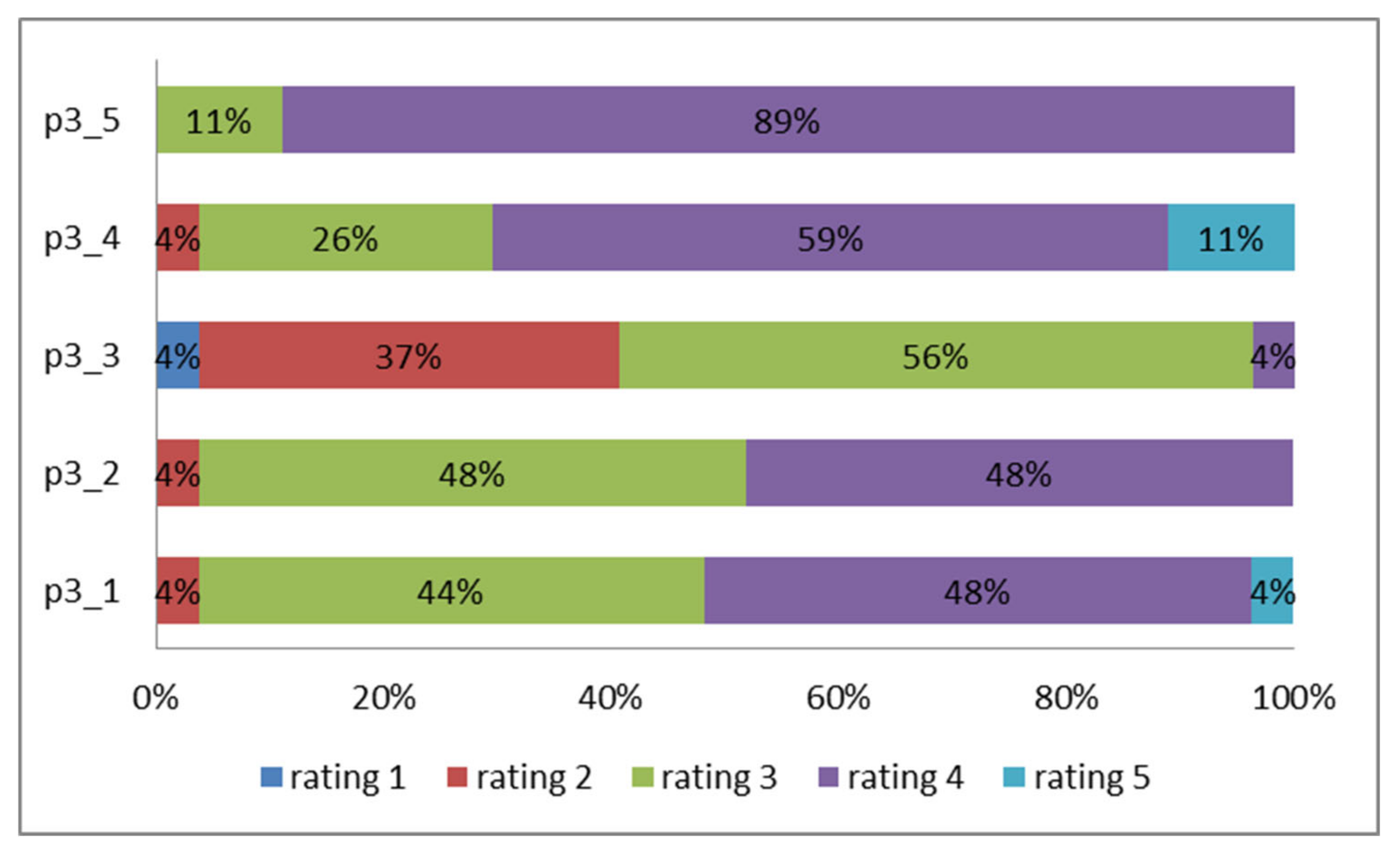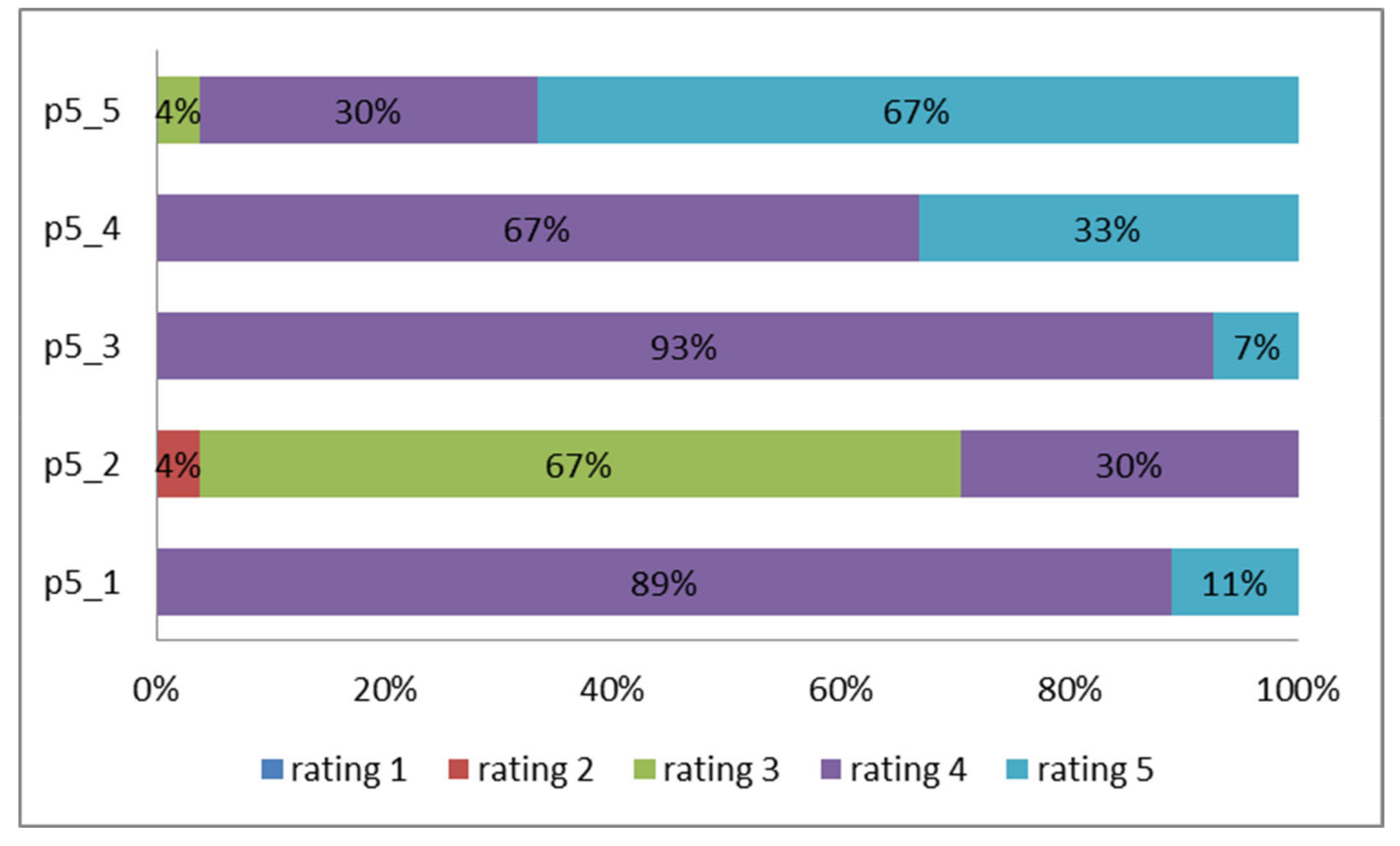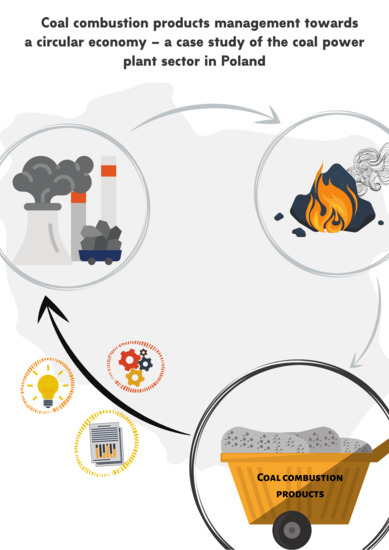Coal Combustion Products Management toward a Circular Economy—A Case Study of the Coal Power Plant Sector in Poland
Abstract
1. Introduction
- identify the level of knowledge of CE principles in coal power sector companies,
- determine areas that stimulate the implementation of a CE and allow one to specify activities for its further development,
- identify the possibility of managing more CCPs in relation to the plans for implementing the CE roadmap in Poland adopted in September 2019,
- introduce CE (NSS 7–Circular economy–water, fossil raw materials, waste) as a national smart specialization in Poland in January 2019 [21].
2. Materials and Methods
- Perceived benefits relating to the potential implementation of CE;
- Challenges related to the implementation of CE;
- Hindrances to the implementation of CE;
- What changes in company management are required in order to implement CE;
- Reasons for implementing CE;
- Prospects for implementing CE.
Verification of the Research Tool
3. Results
- the assessment of the attitude of coal power sector companies towards the CE concept;
- the identification of areas stimulating the implementation of CE, allowing one to determine actions for its further development;
- the use of questionnaire using a five-step Likert scale (where 5 was equivalent to “strongly agree” and 1 was assigned to “strongly disagree”).
3.1. Aspect 1
3.2. Aspect 2
3.3. Aspect 3
3.4. Aspect 4
3.5. Aspect 5
3.6. Aspect 6
4. Discussion
- Extraction of aluminum content from coal fly ash [26] in Indian thermal power plants, which generate around 1 million tonnes with around 25–35% Al2O3 and 50–60% SiO2. Al was extracted by sulphuric acid leaching with calcium sulphate as leach residue. At the conclusion of this process, the leachate is suitable for downstream operations to precipitate alumina.
- Lithium recovery [27] from coal fly ash by a combination of an intensified acid leaching process and pre–desilication.
- A method for the extraction from coal ash of iron, Al, and Ti (United States Patent 4567026) [28].
- Research on the recovery of trace and rare metals from coal and the products of their traditional and thermal enrichment in Poland. Better value raw materials for the metallurgy industry are obtained through a careful selection of coals and the use of carefully selected methods of enriching metal concentrates. This also ensures a significant economic impact on the cost of production [29].
- Furthermore, Hycnar and Tora [29] note research carried out in Poland that allows one to set up the technology for producing metal concentrates such as germanium and gallium oxide concentrate, iron oxides, aluminum oxide, and calcium oxide.
- Analysis of the available technologies, the opportunities for their improvement, and the sources of financing in connection with the implementation of CE principles, as well as the results of research on assessing the implementation of CE in large energy concerns indicate that, along with the development of CE policy in Poland, there is a large potential for the full utilization of CCPs.
5. Conclusions
- The respondents do not understand the context of implementing CE in the value chain (aspect 1—benefits/effects of CE implementation);
- The solution to the problem of concerns about the need to find a way to change the business model toward CE by assessing the entire value chain, without limiting it to the so-called “plant gates.” Such changes can create the increase of production cost (aspect 2—risks/challenges related to CE implementation);
- The biggest obstacle to CE implementation is the lack of guidelines for CE implementation and measurement. Companies need indicators to be able to assess current activities that, in the opinion of respondents, are consistent with the CE (aspect 3—barriers related to CE implementation);
- CE requirements determine areas of necessary modifications to the current way the company is managed. In relation to these areas, it is advisable to propose measurement indicators so that companies can verify the implementation of CE and indicate actions for further modifications. Moreover, it can also be concluded that the respondents, although they show the need for indicators, are not prepared to measure them in the value chain (aspect 4—CE requirements in relation to the management of a company);
- Companies are willing to implement CE due to the economic, environmental, and social aspects. However, in order to capture the economic effects, it is necessary to present the environmental effects in the form of measurable indicators, showing the value that can be obtained when generating a product instead of waste (aspect 5—reasons for CE implementation);
- The respondents see the need to prepare for the changes that are expected in the current business model. The answer to this need is the necessity to develop a circular business model (together with indicators for its measurement), the implementation of which will enable the necessary changes to be made (aspect 6—prospects of implementing CE).
Author Contributions
Funding
Conflicts of Interest
References
- Harris, D.; Heidrich, C.; Feuerborn, J. Global Aspects on Coal Combustion Products. Available online: https://www.coaltrans.com/insights/article/global-aspects-on-coal-combustion-products (accessed on 15 December 2019).
- Yao, Z.T.; Ji, X.S.; Sarker, P.K.; Tang, J.H.; Ge, L.Q.; Xia, M.S.; Xi, Y.Q. A comprehensive review on the applications of coal fly ash. Earth-Sci. Rev. 2015, 141, 105–121. [Google Scholar] [CrossRef]
- Seshadri, B.; Bolan, N.S.; Naidu, R.; Wang, H.; Sajwan, K. Clean Coal Technology Combustion Products. Adv. Agron. 2013, 119, 309–370. [Google Scholar]
- Ash Development Association of Australia, Coal Combustion Utilisation. Available online: http://www.adaa.asn.au/resource-utilisation/ccp-utilisation (accessed on 15 December 2019).
- Homepage of World Wide Coal Combustion Products Network. Available online: http://www.wwccpn.org/ (accessed on 19 November 2018).
- Xing, Y.; Guo, F.; Xu, M.; Gui, X.; Li, H.; Li, G.; Xia, Y.; Han, H. Separation of unburned carbon from coal fly ash: A review. Powder Technol. 2019, 353, 372–384. [Google Scholar] [CrossRef]
- Park, J.Y.; Chertow, M.R. Establishing and testing the “reuse potential” indicator for managing wastes as resources. J. Environ. Manag. 2014, 137, 45–53. [Google Scholar] [CrossRef] [PubMed]
- Szczygielski, T.; Niewiadomski, M. Zarys modelu biznesowego dla energetyki. Bezodpadowa Energetyka Węglowa (BEW) (Outline of a business model for zero waste coal power (ZWCP)), Materials from the meeting of the Circular Economy in Poland Working Group, 25 May 2017, Warsaw.
- Kulczycka, J.; Dziobek, E.; Szmiłyk, A. Challenges in the management of data on extractive waste—The Polish case. Miner Econ. 2019. [Google Scholar] [CrossRef]
- Millward-Hopkins, J.; Purnell, P. Circulating blame in the circular economy: The case of wood-waste biofuels and coal ash. Energy Policy 2019, 129, 168–172. [Google Scholar] [CrossRef]
- Ministerstwo Aktywów Państwowych. Updated Draft Version of Energy Policy of Poland until 2040. Available online: https://www.gov.pl/web/aktywa-panstwowe/polityka-energetyczna-polski-do-2040-r-zapraszamy-do-konsultacji (accessed on 23 November 2018).
- Krajowy Plan Na Rzecz Energii i Klimatu Na Lata 2021–2030. Available online: https://www.gov.pl/web/klimat/krajowy-plan-na-rzecz-energii-i-klimatu (accessed on 20 February 2020).
- EC-European Commission. Directive 2010/75/EU of the European Parliament and of the Council of 24 November 2010 on industrial emissions. Off. J. Eur. Union L 2010, 334, 2010. [Google Scholar]
- Jarema-Suchorowska, S.; Zupa-Marczuk, P.; Głowacki, E. BAT/BREF—Review of LCA requirements for emissions of pollutants and their impact on CCPs economy. In Proceedings of the 26th International Conference “Ashes from Power Generation”, Sopot, Poland, 8–10 October 2019. [Google Scholar]
- Kulczyka, J.; Dziobek, E.; Ubeman, R. Industrial Symbiosis for the Circular Economy Implementation in the Raw Materials Sector—The Polish Case. In Industrial Symbiosis for the Circular Economy: Operational Experiences, Best Practices and Obstacles to A Collaborative Business Approach; Salomone, R., Cecchin, A., Deutz, P., Raggi, A., Cutaia, L., Eds.; Springer: Berlin, Germany, 2020; pp. 73–86. Available online: https://www.springer.com/gp/book/9783030366599 (accessed on 20 May 2020).
- Ahmaruzzaman, M.A. Review on the utilization of fly ash. Prog. Energy Combust. Sci. 2010, 36, 327–363. [Google Scholar] [CrossRef]
- Blissett, R.; Rowson, N.A. Review of the Multi-Component Utilisation of Coal Fly Ash. Fuel 2012, 97, 1–23. [Google Scholar] [CrossRef]
- Huang, T.Y.; Chiueh, P.T.; Lo, S.L. Life-cycle environmental and cost impacts of reusing fly ash. Resour. Conserv. Recycl. 2017, 123, 255–260. [Google Scholar] [CrossRef]
- Izquierdo, M.; Querol, X. Leaching behaviour of elements from coal combustion fly ash: An overview. Int. J. Coal Geol. 2012, 94, 54–66. [Google Scholar] [CrossRef]
- Kristensen, H.S.; Mosgaard, M.A. A review of micro level indicators for a circular economy – moving away from the three dimensions of sustainability? J. Clean. Prod. 2019, 243, 118531. [Google Scholar] [CrossRef]
- Krajowa Inteligentna Specjalizacja, Circular Economy—Water, Fossil Raw Materials, Waste. Available online: https://smart.gov.pl/en/circular-economy-water-fossil-raw-materials-waste (accessed on 20 November 2019).
- Gonenc, H.; Scholtens, B. Environmental and Financial Performance of Fossil Fuel Firms: A Closer Inspection of their Interaction. Ecol. Econ. 2017, 132, 307–328. [Google Scholar] [CrossRef]
- Crippa, M.; Oreggioni, G.; Guizzardi, D.; Muntean, M.; Schaaf, E.; Lo Vullo, E.; Solazzo, E.; Monforti-Ferrario, F.; Olivier, J.G.J.; Vignati, E. Fossil CO2 and GHG Emissions of All World Countries—2019 Report; EUR 29849 EN; Publications Office of the European Union: Luxembourg, 2019; ISBN 978-92-76-11100-9. [CrossRef]
- Lelek, Ł.; Kulczycka, J. Life Cycle Modelling of the impact of coal quality on emissions from energy generation. Energies 2020, 13, 1515. [Google Scholar] [CrossRef]
- Association of State and Territorial Solid Waste Management Officials. Beneficial Use of Coal Combustion Residuals—Survey Report, September 2012. Available online: http://astswmo.org/files/policies/Materials_Management/2012-09-BUTF-BU_of_CCRs_Report.pdf (accessed on 13 January 2020).
- Tanvar, H.; Chauhan, S.; Dhawan, N. Extraction of aluminum values from fly ash. Mater. Today 2018, 5, 17055–17063. [Google Scholar] [CrossRef]
- Li, S.; Qin, S.; Kang, L.; Liu, J.; Wang, J.; Li, Y. An efficient approach for lithium and aluminum recovery from coal fly ash by pre-desilication and intensified acid leaching processes. Metals 2017, 7, 272. [Google Scholar] [CrossRef]
- Method for Extraction of Iron Aluminum and Titanium from Coal Ash. Available online: http://www.freepatentsonline.com/4567026.html (accessed on 13 January 2020).
- Hycnar, J.; Tora, B. Analiza zawartości wybranych metali w węglach i produktach ich spalania. CUPRUM–Czasopismo Naukowo-Techniczne Górnictwa Rud. 2015, 2, 157–168. [Google Scholar]







| Energy Group/Enterprise | Amount of CCPs [Tonne/Year] |
|---|---|
| CEZ Produkty Energetyczne | 260,000 |
| ECO S.A. | 70,350 |
| EDF Polska S.A. | 1,465,800 |
| ENEA | 1,351,504 |
| ENERGA | 357,709 |
| Fortum Power & Heat | 37,000 |
| GDF Suez | 1,117,200 |
| Grupa AZOTY | 322,500 |
| PAK | 2,454,342 |
| PGE GKiK | 9,792,071 |
| PGNiG Termika | 700,002 |
| Tauron Ciepło | 238,399 |
| Tauron Wytwarzanie | 1,656,555 |
| Veolia | 473,686 |
| TOTAL: | 20,297,118 |
| Aspect 1 | Environmental Benefits (Effects) Related to CE Implementation |
|---|---|
| p 1_1 | increase in efficiency of resource use |
| p 1_2 | extended product life cycle 1 |
| p 1_3 | introducing more sustainable production |
| p 1_4 | reduction of environmental footprint |
| p 1_5 | establishing less energy–intensive relations with suppliers |
| p 1_6 | establishing relations generating less environmental pressure with consumers |
| p 1_7 | generating products instead of waste |
| p 1_8 | improvement in environment quality |
| p 1_9 | strengthening environmental management standards |
| p 1_10 | increase in ecological activity |
| p 1_11 | closing CCPs landfills |
| p 1_12 | reduction of the environmental cost of production |
| Aspect 2 | Risks/Challenges Related to Implementing CE |
| p 2_1 | increased production costs |
| p 2_2 | need for costly and risky investments |
| p 2_3 | need to find a way to change the process’s business model |
| p 2_4 | risk of reduced competitiveness of a company |
| p 2_5 | need to leave the “plant gates” 2 |
| Aspect 3 | Barriers/Hindrances to Implementing CE |
| p 3_1 | failing to implement a multi–product power engineering strategy |
| p 3_2 | failing to promote CCPs as a fully–fledged waste product |
| p 3_3 | lack of purchasers for raw materials recovered from waste |
| p 3_4 | lack of indicators and guidelines for implementing and measuring CE |
| p 3_5 | current CE–consistent activities are not appreciated and evaluated |
| Aspect 4 | Requirements of CE with Regard to Company Management |
| p 4_1 | environmental responsibility going beyond the plant gates |
| p 4_2 | cooperation within clusters |
| p 4_3 | construction of revenue generation logic based on identification of the value chain |
| p 4_4 | internalisation of external environmental costs |
| p 4_5 | evaluation of environmental policy as regards suppliers and consumers |
| p 4_6 | creation of buyers–eco–consumers’ market |
| p 4_7 | implementation of a multi–product and waste–free strategy for power engineering |
| p 4_8 | recognition of factors representing environmental costs in the expenditure structure |
| p 4_9 | influencing the awareness and actions of other bodies |
| p 4_10 | identification of the value chain to specify quantifiable environmental benefits |
| p 4_11 | integration of environmental policy with development strategy |
| Aspect 5 | Reasons for Implementing CE |
| p 5_1 | awareness of the importance of environmental protection |
| p 5_2 | possibility of waste management cost reductions |
| p 5_3 | social benefits |
| p 5_4 | possible reduction of the product’s environmental footprint |
| p 5_5 | economic benefits |
| Aspect 6 | Assessment of the Feasibility of Implementing CE |
| p 6_1 | within the next 10 years |
| p 6_2 | within the next 20 years |
| Analyzed Scope of the Survey Questionnaire | Cronbach’s α Coefficient |
|---|---|
| All survey questionnaire | 0.837 |
| Set of terms of aspect 1 | 0.641 |
| Set of terms of aspect 2 | 0.727 |
| Set of terms of aspect 3 | 0.677 |
| Set of terms of aspect 4 | 0.322 |
| Set of terms of aspect 5 | 0.193 |
| Set of terms of aspect 6 | 0.462 |
| Additional Classification of Aspect 4 Terms: | Cronbach’s α Coefficient |
|---|---|
| Set of terms for environmental costs and benefits: p 4_4, p 4_10, p 4_11 | 0.648 |
| Set of terms concerning the external actions related to the implementation of a multi–product strategy: p 4_2, p 4_7, p 4_9 | 0.757 |
| Set of terms for creating a purchaser market through the use of value: p 4_3, p 4_6 | 0.606 |
| Set of terms concerning environmental costs generated in relation to suppliers and customers: p 4_1, p 4_5, p 4_8 | 0.397 |
| Additional Classification of the Aspect 5 Terms: | Cronbach’s α Coefficient |
|---|---|
| Set of terms concerning external causes: p 5_1, p 5_3, p 5_4 | 0.658 |
| Set of terms for internal reasons: p 5_2, p 5_5 | 0.744 |
© 2020 by the authors. Licensee MDPI, Basel, Switzerland. This article is an open access article distributed under the terms and conditions of the Creative Commons Attribution (CC BY) license (http://creativecommons.org/licenses/by/4.0/).
Share and Cite
Bielecka, A.; Kulczycka, J. Coal Combustion Products Management toward a Circular Economy—A Case Study of the Coal Power Plant Sector in Poland. Energies 2020, 13, 3603. https://doi.org/10.3390/en13143603
Bielecka A, Kulczycka J. Coal Combustion Products Management toward a Circular Economy—A Case Study of the Coal Power Plant Sector in Poland. Energies. 2020; 13(14):3603. https://doi.org/10.3390/en13143603
Chicago/Turabian StyleBielecka, Agnieszka, and Joanna Kulczycka. 2020. "Coal Combustion Products Management toward a Circular Economy—A Case Study of the Coal Power Plant Sector in Poland" Energies 13, no. 14: 3603. https://doi.org/10.3390/en13143603
APA StyleBielecka, A., & Kulczycka, J. (2020). Coal Combustion Products Management toward a Circular Economy—A Case Study of the Coal Power Plant Sector in Poland. Energies, 13(14), 3603. https://doi.org/10.3390/en13143603







